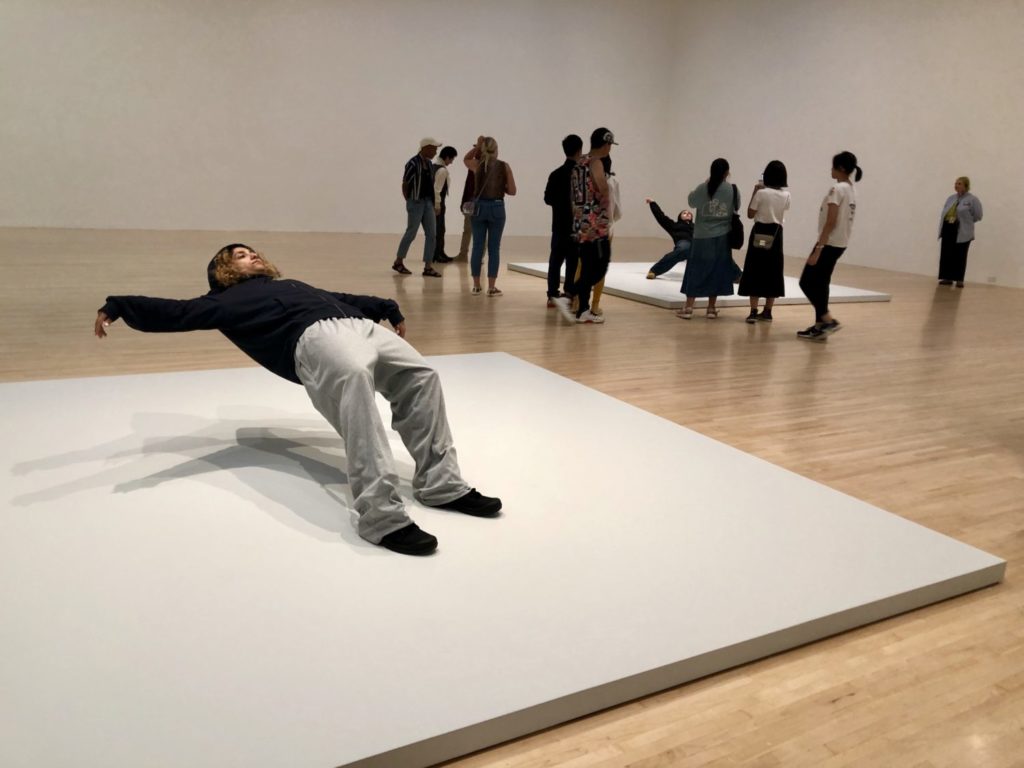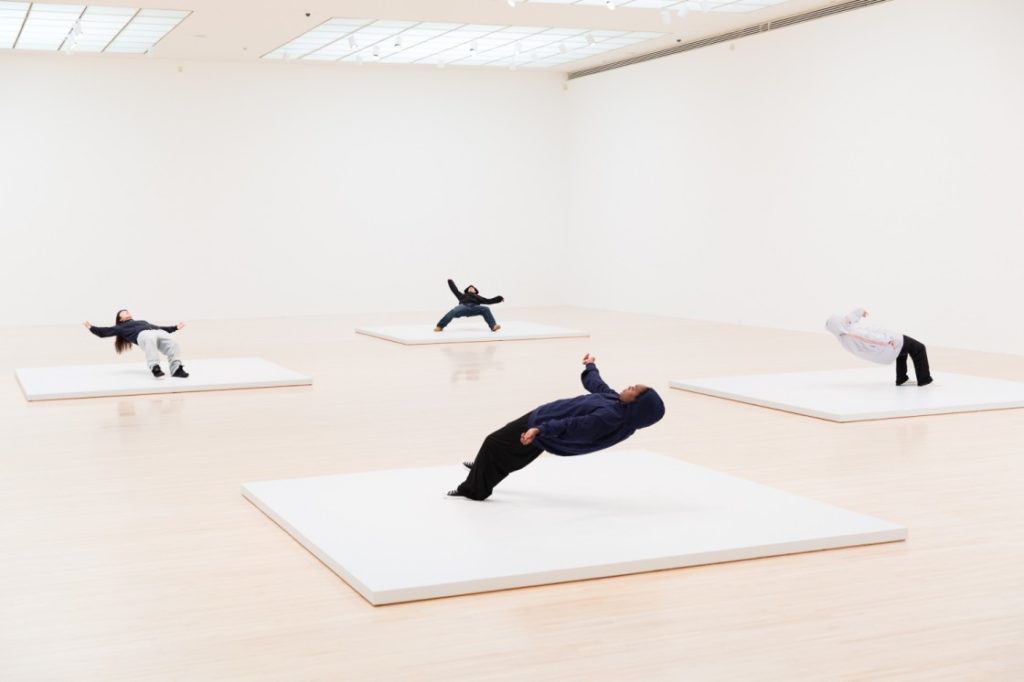The performance art piece “In Just a Blink of an Eye” by Chinese artist Xu Zhen was recently acquired by MOCA for its permanent collection. And while its otherworldly engineering of performers seemingly frozen in both time and mid-air inevitably prompts questions as to how it’s done and what the work means, it also sparks a subset of more semantic interrogations fit for a proper art nerd.
As human beings are suspended like hanging sculptures, barely anchored to the ground, across the wide room, viewers are intent on figuring out the logistics. Its narrative symbolism, having to do with the long-term limbo of lives uprooted and placed on hold during the process of immigration, is expressed as physical endurance and an energetic status of static, not unlike the experiences of first and second generations working to put down new roots.
As a formal matter, it’s a terrific trick, which by its very nature of using living, conscious bodies instead of even hyperrealistic sculptures also forces the viewer into an awareness and complicity in their own privileged viewpoint on the work. We are free to come and go, move throughout the space, capture images, point and stare — the performers are not even free to make eye contact.

Installation view of Xu Zhen: In Just a Blink of an Eye, at MOCA Grand Avenue (Shana Nys Dambrot)
Now, in this 2019 iteration the performers are dancers (which partly explains their physical ability to enact the work, which while stable, most certainly is not comfortable). They are young people of color, and they are dressed in lowkey contemporary street fashion. However, this raises the first of many material and in a sense, archival questions about the work, its intentions, and its possible future contexts.
If the topic of the work is the social and political climate of 2019 in Los Angeles, the casting and costume choices are on point. But if the work is shown/performed again in Los Angeles in 25 years, or is loaned to an institution in another part of the world, will it still be about that same here and now? Because if the topic of the work is to examine its own contemporaneous context, would a different demographic wearing different sartorial signifiers be called for? Should they be older then — as in, if they’re 20 now and it’s shown in 20 years, should the performers cast at that time be 40, to track with the original “age” of the piece, or will they be dancers who are 20 then, and thus haven’t been born yet in 2019?
Does that mean the artist demands or is required to reimagine the work each time it’s shown, forever? What about in 150 years from now? How would that work? Will the artist leave explicit instructions, or leave it up to the curators of the future? Will the public have access to those materials as part of the work? Xu Zhen isn’t talking. It makes me think about James Turrell, who is currently trying to figure out what to do with his indoor light-based installations when the bulbs they’re made of become obsolete. They are so finely calibrated, it’s not like just any bulb will do. Instructions are well and good but there will come a day when technology exists that no one has planned for. What then? And that’s without the complexifying factors of flesh and blood involved in Xu Zhen’s piece.

Installation view of Xu Zhen: In Just a Blink of an Eye, at MOCA Grand Avenue (Myles Pettengill)
But even if these arcane conservation-adjacent details aren’t your bag, the pure and breezy magic of the installation itself is undeniable — and best experienced in person. Instagram stories aside, it may turn out to be the longest you’ve ever stared at a single work of art.
Xu Zhen’s “In Just a Blink of an Eye” will be on view at MOCA Grand Ave. in downtown, every Saturday and Sunday through September 2, 11am-5pm. Free with regular admission.
Advertising disclosure: We may receive compensation for some of the links in our stories. Thank you for supporting LA Weekly and our advertisers.

